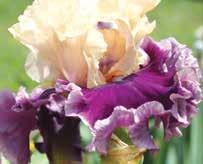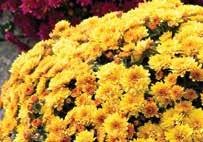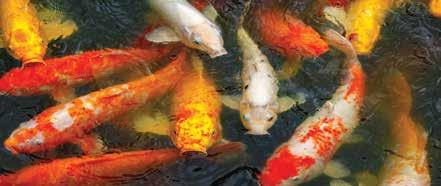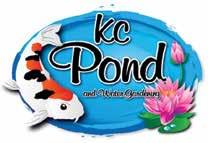
7 minute read
Indoor Gardening
Indoor Gardening: Grow What You’ll Eat
The most fulfilling part of growing your own food, in my opinion, is having the opportunity to enjoy eating it! It’s the culmination of so much careful planning and tending to your garden all the way from seed to harvest. It’s the payoff for all your hard work.
That’s why I typically respond to the question “what should I grow?” with another question; “what do you like to eat?” I can’t imagine an easier way to become dissuaded from gardening than to spend months preparing and maintaining your crops, only to leave the fruits of your labor to waste.
While that may seem ridiculous, I can’t even count the number of people I have met who grow food that they don’t like to eat. Sometimes it’s because they just aren’t aware of all the varieties they could potentially grow. Sometimes it’s because they read somewhere that a plant was easy to care for and they wanted to have quick success. Sometimes it’s because they simply loved the idea of growing their own food, read about plants that do well in their region, and then planted the varieties that were listed.
What I encourage everyone to do is take a step back, wait until you’re starting to feel hungry and then write down a list of foods that sound appetizing. This should be your starting point. Don’t make a list of the things you “should” eat or that belong to a special nutrition plan you read about in a book. Find the dishes you crave and then break down the list of ingredients. Identify which of those ingredients are plants. Pick one or two from that list to grow so you can use them in your favorite recipe. Even if you don’t grow every single ingredient, you’ve got to start somewhere. This is where the allure of indoor gardening takes hold because it’s within your power to create the environment necessary to grow ANYTHING your heart desires.
Let’s be clear. I’m certainly an advocate for healthy eating, and I believe that meals with less ingredients and the fewest possible steps away from their natural source are better for you in the long run. But this isn’t an article about nutrition, it’s about finding success growing your own food. If you want to cultivate nothing but arugula and celery, more power to you. In my case, I’m daydreaming of a carb-lover’s dream, pesto pasta!
I’m still going to need pine nuts, olive oil, pasta, etc., from the grocery store, but there is one plant ingredient I can easily grow myself – basil. What’s more, basil can be used in a myriad of different recipes which means growing it all year-round is even more appealing. For this herb, we’re going to use a Continuous Flow or Nutrient Film Technique (NFT) hydroponic system to ensure we never run out of fresh leaves to harvest. Don’t be overwhelmed by the name. It just means there are some tubes with a water-nutrient solution flowing through them, feeding the plant roots 24/7.
Complete kits are available in stores or online, but a basic system can be built from only a few components. You will need a reservoir to hold your water-nutrient solution (a 3-to-5-gallon Rubbermaid bin will do the trick). Fill the reservoir with water and a “grow” nutrient of your choice based on the recommended proportions from the product’s label. This is typically something with higher levels of nitrogen and potassium like General Hydroponics’ FloraNova Grow. It’s best to bring the pH of your nutrient solution to 5.5-6.0 for optimal growth, using pH Up or pH Down as necessary.
Pick up a few feet of 4-inch diameter PVC tubing and drill 2-inch diameter holes every 8 inches on the top. Place a 2-inch net pot in each hole. This is your “channel.”
Turn some PVC piping or other material into a small rectangular stand that holds your channel above the reservoir with one end slightly higher than the other. Place the stand so that when water runs down the channel, it spills back into the reservoir.
Place a small water pump (150+ gallons per hour) in the reservoir and run flexible plastic tubing from the pump to the high-end of the channel. Plug in the pump. You should now have a continuous flow of nutrient solution from the reservoir to the top of the channel and then carried by gravity down the bottom of the channel, back into the reservoir.
A 100W LED fixture situated 18” above the plants on a timer with a 14-ON, 10-OFF schedule will provide more-than-enough light to begin placing your basil seedlings in the 2” net pots throughout the channel. Seeds can be started in a number of different mediums, but I prefer 1.5” rockwool or Oasis cubes to minimize the mess and ensure a good fit into the net pots. As the basil grows, its roots will expand into the channel and live in the constantly flowing nutrient solution.
Keep temperatures on the warmer side, around 75°F to 85°F and you will be harvesting fresh leaves in just a few weeks. Occasionally, you will need to pinch or cut a flower. If the flavor begins to change or the flowers show up too frequently on certain plants, remove them and insert new seedlings in their place.
Basil is a plant ingredient that is easy to grow and can be used in a myriad of recipes.
JASON MISPAGEL Indoor Gardener
Jason Mispagel is the co-owner and operator of Year-Round Garden, a grower’s supply center serving both home and commercial customers since 2016. To contact Jason, call 816-216-6917 or jason@year-roundgarden.com.

Greater Kansas City Iris Society Plant Sale

Saturday, August 21 10 a.m. to 3 p.m. Trailside Center 99th & Holmes, KCMO
Bearded iris in a variety of classes will be available for sale: TB, BB, IB, SDB, MTB Come early for best selection as last year was a sell out!
Bring this coupon to our sale to receive one FREE Median Iris.
No purchase necessary.
www.kciris.org
1601 Tudor Rd., Lee’s Summit, MO (816) 525-4226
MARIA’S FAMOUS BELGIAN MUMS ARE BACK!
5 huge Mums on sale for $47.99
It’s time for lawn renovation and aeration
9108 W. 57th Merriam, KS 66203 (1 blk E. of Merriam Dr.) Hrs: Mon.–Fri. 7am–5pm • Sat. 8am–12pm 913-432-8092
MISSED AN ISSUE? FIND BACK ISSUES AT KCGMAG.COM
A Monthly Guide to Successful Gardening June 2013GARDENERThe Kansas City
GRAB A CUP OF COFFEE, SIT BACK AND ENJOY OUR ARCHIVES
Summer Flowering Trees Worth A Closer Look
KCGMAG.COM
SPEAKERS’ BUREAU
Pets and Plants Native Bouquets Using Beneficial Nematodes Do Butterflies Fall in Love?
Need a speaker for your church, civic group or garden club? The Johnson County Extension Speakers’ Bureau have the speakers you are looking for on just about any topic like soil testing, environmentally safe lawn care, or perennial flower gardening.
We can adapt to meet your group’s needs, from a short 20-minute presentation to a longer format, if needed. While there are no fees for a volunteer speaker, a donation to Extension or the chosen volunteer organization is appreciated.
To schedule a speaker for your group, please contact the office. For more information on this service, call 913-715-7000.


One free, easy call gets your utility lines marked AND helps protect you from injury and expense. Safe Digging Is No Accident: “Always Call Before You Dig in Kansas” Call 811, 1-800-DIG-SAFE, (800-344-7233) or visit us at www.kansas811.com.

We carry a large selection of domestic and imported koi from the best suppliers!
THE METRO’S ONLY FULLY STOCKED, DEDICATED POND STORE!
With the most diverse selection of equipment and livestock, we have products for all levels of pond hobbyists and the knowledge and experience to help you create and maintain your pond paradise!
Welcome Lawrence Hobbyists!

Scheduling pond cleanings now.
We have the friendliest, knowledgeable staff and serve the entire Kansas City metro!
Pond maintenance and builders inquiries welcome.
816-842-5012 • pondskc.com
Check our website and Facebook for more information.







